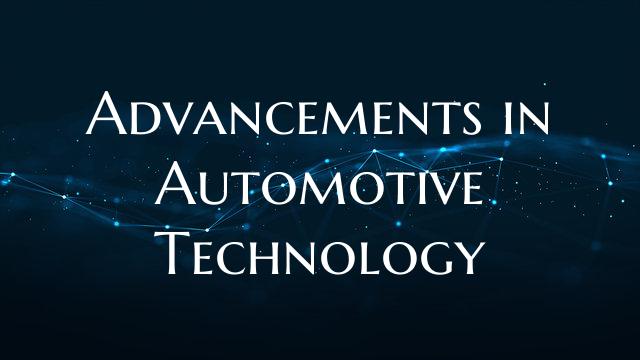Advancements in Automotive Technology
In recent years, the automotive industry has witnessed remarkable advancements in technology, revolutionizing the way we drive and interact with vehicles. These innovations are not only enhancing the driving experience but also improving safety, connectivity, and sustainability. Let's take a closer look at some of the cutting-edge technologies driving the future of automotive engineering.
One of the most significant advancements is the development of autonomous or self-driving vehicles. Companies like Tesla, Google's Waymo, and numerous others are at the forefront of this technology, with promising results in testing and simulations. Self-driving cars use a combination of sensors, cameras, radars, and artificial intelligence to navigate roads, detect obstacles, and make informed decisions in real-time. The potential benefits of autonomous vehicles include enhanced road safety, reduced traffic congestion, and increased mobility for the elderly and disabled.
Another major trend in automotive technology is the electrification of vehicles. With the push towards sustainability and reducing carbon emissions, electric vehicles (EVs) have gained widespread adoption. Companies like Tesla, Nissan, and Chevrolet have been leading the charge in producing electric cars with long-range capabilities and fast-charging infrastructure. Advances in battery technology have also made EVs more affordable and practical for everyday use, contributing to a greener and cleaner transportation ecosystem.
Moreover, connectivity and in-car technology have seen significant improvements, transforming vehicles into smart, connected devices. Features like advanced driver-assistance systems (ADAS), infotainment systems, and vehicle-to-everything (V2X) communication have become standard in modern automobiles. These technologies not only provide convenience and entertainment for drivers but also enhance safety by alerting them to potential hazards and assisting in navigation.
In addition, the automotive industry is exploring the potential of augmented reality (AR) and virtual reality (VR) in designing and testing vehicles. AR can be used to enhance the driving experience by overlaying real-time information on the windshield, such as navigation directions, speed limits, and hazard warnings. VR, on the other hand, enables designers and engineers to visualize and simulate vehicle prototypes in a virtual environment, speeding up the development process and reducing costs.
As automotive technology continues to evolve, we can expect further innovations in areas such as cybersecurity, vehicle-to-infrastructure (V2I) communication, and advanced materials for lighter and more fuel-efficient vehicles. The future of transportation is undoubtedly exciting, with these advancements in automotive technology paving the way for safer, more sustainable, and smarter mobility solutions.

